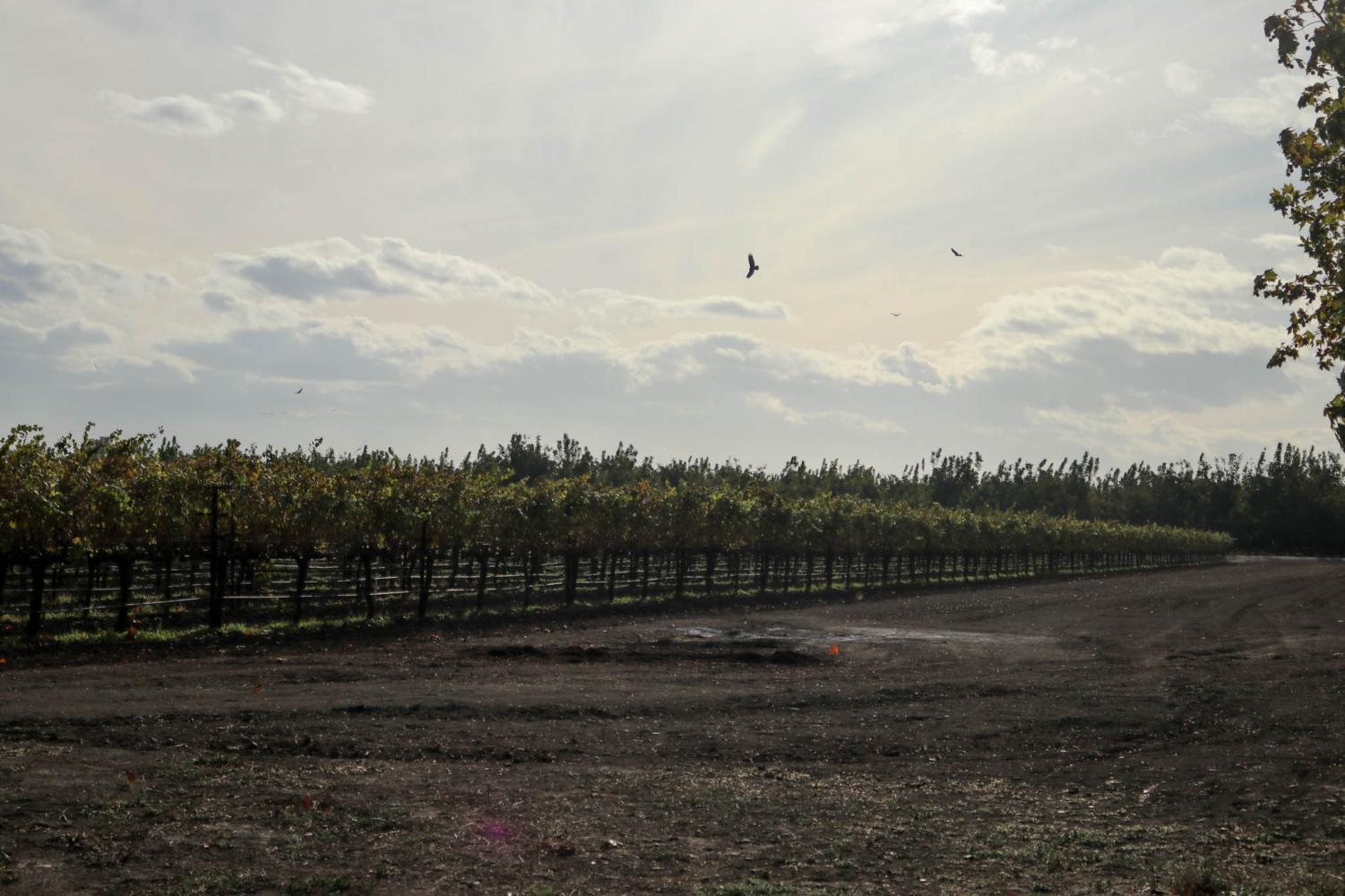The long and wine-ding road: New Clairvaux’s complex history
November 16, 2022
At first glance, the tiny community of Vina in Tehama County may not have much to offer. There’s an elementary school, a railroad that runs right through town and to the untrained eye — not much else. However, this single-exit town that creeps up on drivers hurtling northbound on U.S. Highway 99, is home to a historical gem. Hidden toward the edge of town is New Clairvaux, a winery and monastery for Trappist-Cistercian monks.
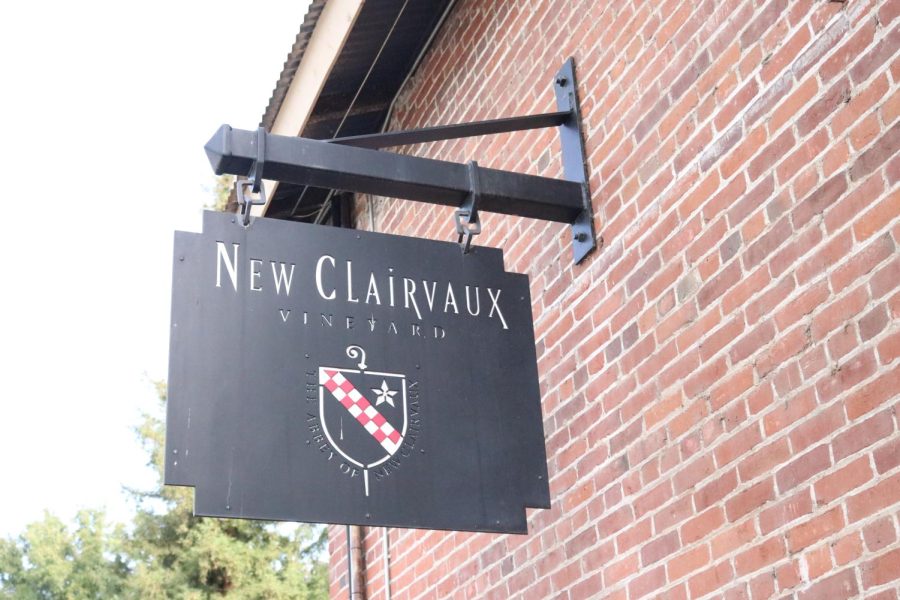
Since producing their first bottles in 2003, the winery has been run by two groups of partners: Cistercian Monks who call the property home, and the Sunseri family, descendants of early California winemaker Anton Nichelini.
New Clairvaux’s 30 acres of vineyard is split into two 15-acre blocks. One of these blocks is St. James, which resides right next to the winery on the monks’ property. The Poor Souls block is located in the town of Vina, and sits on Sunseri property. The equal split in acreage represents the 50/50 partnership between the monks and the Sunseri family.
Aimée Sunseri, a fifth-generation winemaker, has been New Clairvaux’s sole winemaker since 2003. Her story is one of hard work, determination and inspiration. Though, Sunseri’s story is just one of many incredible tales that have been uprooted and planted in New Clairvaux’s soil. To do her story justice, we must first explore the stories of those who came before her.
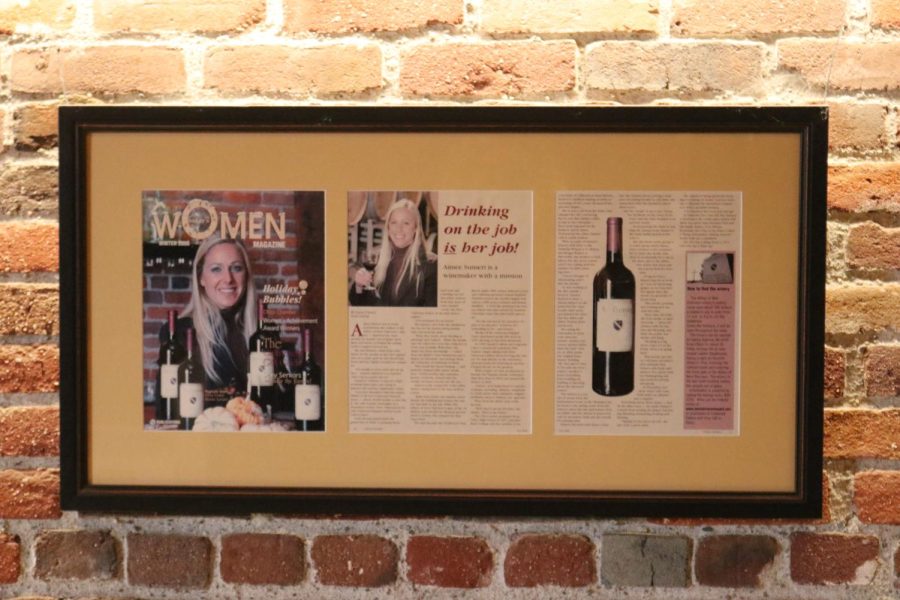
Aimée’s husband and New Clairvaux’s general manager, John Adams, humbly claims that he was just given that title out of kindness. However, his knowledge of the land’s history and those who have inhabited it alone shows how invested he is in not only the business, but the history behind it.
The monks and their history:
Though this isn’t the story of the Cistercian monks, their history is so deeply intertwined it would be a sin to ignore it.
Their history dates back nearly a millennium. According to New Clairvaux’s synopsis of the monks’ history “In 1098, a group of Benedictine monks broke off and established a monastery in a swampland called Citeaux in Burgundy, France.”
Adams said the people who became Cistercians wanted to live like Christ so they practiced manual labor, being poor and praying for people. That’s why the monks at New Clairvaux pray seven times every day, with the first prayer beginning at 3:30 a.m.
“[They are] super kind and super open-minded. It seems like everybody has their mission, you know, and their mission is to pray on behalf of mankind,” Adams said. “They build their body for prayer and they pray for mankind.”
While prayer and a relationship with God are the main components of the Cistercian order, they also have a very rich history with wine and viticulture, the science of studying and growing grapes.
During the high middle ages, the Cistercians developed techniques like leaf thinning and trellising, both of which are still used today. They also developed the concept that different locations impacted certain grape varieties, giving them unique characteristics — something that would later become known as “terroir.”
Today, New Clairvaux’s monks help work in the vineyards and reside in the monastery.
The many travels to the land:
Like all of California, what would eventually become the town of Vina and the county of Tehama was occupied by Indigenous Americans, and the tribe in this region was the Yahi. In the 16th century, the Spanish empire began its colonization of the region.
Fast forward to 1843, when the independent state of Mexico carved up the region and created a 22,000-acre land grant that was obtained by early-California pioneer, Peter Lassen.
By 1846, Lassen had planted one acre of grapes on the property, the first of many vineyards the area would go on to host. Putting it into perspective, it’s strange to think that winemaking in California predates the discovery of gold!
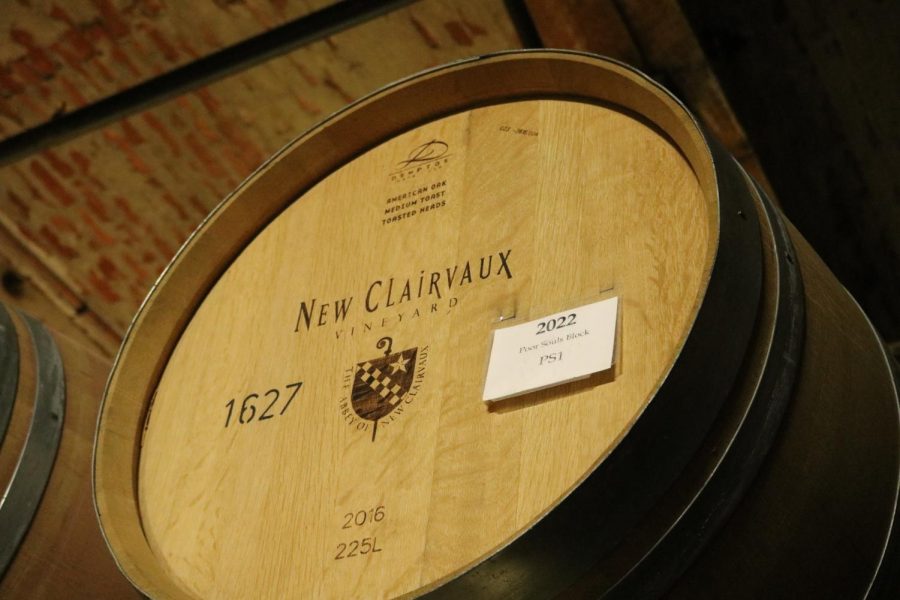
Lassen died in 1859, but prior to that he had promised his ranch to many people he had owed, one of whom was Henry Gerke. Gerke took possession of part of the land in the early 1850s, expanding Lassen’s one acre into 100. The town of Vina was born soon after.
During this time, Leland Stanford, a man of many titles including railroad baron, California Governor, U.S. Senator and founder of Stanford University, began purchasing land in the area. Gerke owned the property until 1881 when Stanford purchased it from him. What had once been Peter Lassen’s 22,000-acre land grant soon became a part of Stanford’s 55,000-acre wine ranch with over 4,000 acres of vineyards, the largest winemaking operation in the world at the time. Stanford created the first ever 24-hour operating wine facility and produced more than 2 million gallons of wine a year, despite having more luck with Brandy.
When Stanford died in 1893, most of his assets went to the board of directors at Stanford University — except for his great Vina Ranch, which his wife Jane inherited and ran until her suspicious death in 1905. Afterward, Stanford University took control of the ranch where they ran it with moderate success until Prohibition began in the 1920s. Over the next several decades the ranch would switch ownership several times, lasting up until the 1950s when it was purchased by an order of Trappist-Cistercian monks.
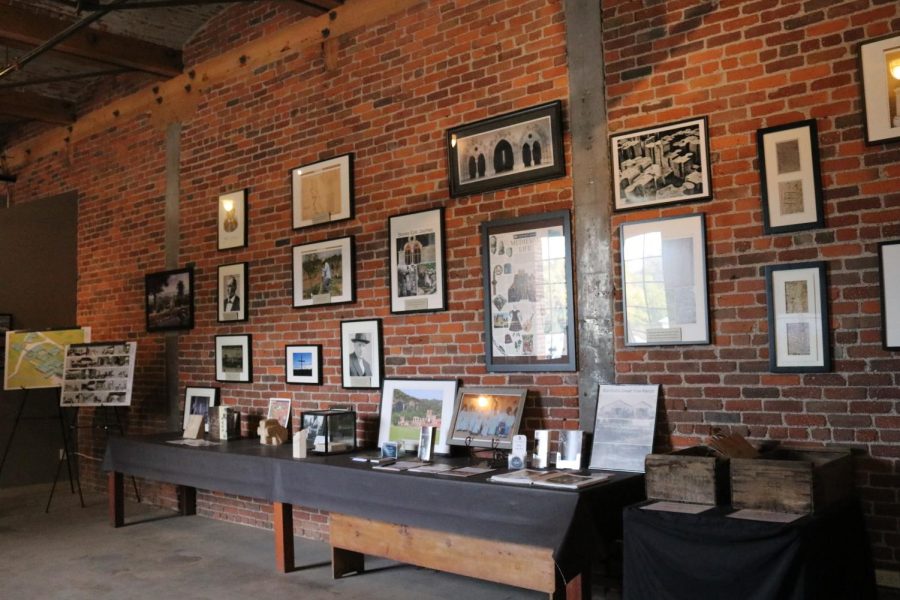
However, Stanford wasn’t the only wealthy Californian of the era, and while his ranch was changing hands in ownership, another former U.S. Congressman, William Randolph Hearst was building a castle on the Mccloud River in Siskiyou county. The castle, called Wyntoon, was as much of a show of extravagance and opulence as his other, more well-known properties.
According to The Herald-Times, Hearst was a fan of Gothic architecture, and on a trip to Europe he fell in love with the beauty of a Cistercian monastery in Ovlia, Spain. Between 1930 and 1931, he spent over $1 million to deconstruct the 800-year-old monastery, and placed the stones on boats, shipping them to San Francisco harbor.
The stones were originally intended for his Mccloud property, but like most Americans living during the Great Depression, Hearst was struggling financially. When the city of San Francisco charged him for the storage of the stones, Hearst bit the bullet and let the city keep them. During their time in storage, the boxes the stones were stored in caught fire multiple times and were eventually transported to Golden Gate Park where they sat in the public eye until the 1990s.
The birth of New Clairvaux:
Like grape vines, the tales of New Clairvaux soon became intertwined with one another. As 800-year-old Cistercian stones sat in San Francisco, attracting rain and graffiti, Cistercian monks on the other side of the country were ready to impart on the journey of a lifetime.
In the early 1950s, the Abbey of Gethsemani, located in Trappist, Kentucky, was looking to expand and consequently purchased close to 600 acres in the small northern California town of Vina.
Now this would be a big move for anyone, but for the monks, it was huge. Monks of the Trappist-Cistercian order have to make vows of stability, poverty, labor and obedience. Part of this means that they don’t leave their monasteries or Abbey’s property unless it’s for extraordinary circumstances.
Expansion and the creation of a new Abbey fit the bill of extraordinary circumstances. In 1955, a group of 27 monks were ordered to leave Gethsemani forever to continue the mission out west. A train left for Sacramento, with 26 monks on board.
The 27th, Thomas Davis, who Adams described as “rebellious in the most respectful way,” was reluctant to make the journey. Though reluctant, he had taken a vow of obedience and had no choice but to listen to his Abbott when he told him to go west.
Davis ended up in San Francisco where he stayed with a family friend for a couple of days. According to Adams, one day, while driving through the city, Davis and his host passed through Golden Gate Park. Adams is alleged to have pointed out a pile of large stones, a pile that just so happened to previously have been the literal building blocks of a Trappist-Cistercian monastery.
Suddenly, it all made sense to Davis. These sacred stones were why God had sent him across the country, and he knew the stones were destined to end up in the same place he did. After arriving in Vina, he made it his mission to acquire the stones, one way or another.
Over the next 40 years, Davis was eventually bestowed the title of Abbott and the City of San Francisco unsuccessfully attempted to sell the Cistercian stones numerous times. Finally, in 1994, the city of San Francisco sold New Clairvaux most of the remaining stones for just one dollar on the condition that the public would still have access to the stones.
As a result of this condition, the stones couldn’t be used for the monastery, where only the monks are allowed. Nonetheless, Davis achieved his goal, and in 1994 when the shipment of stones arrived in Vina by the truck load, he was there to help unload them one by one.
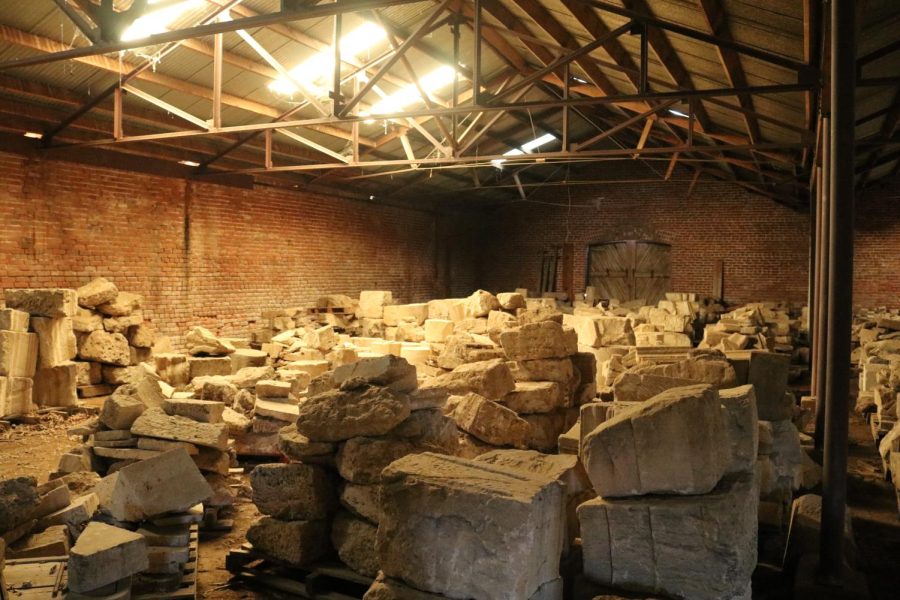
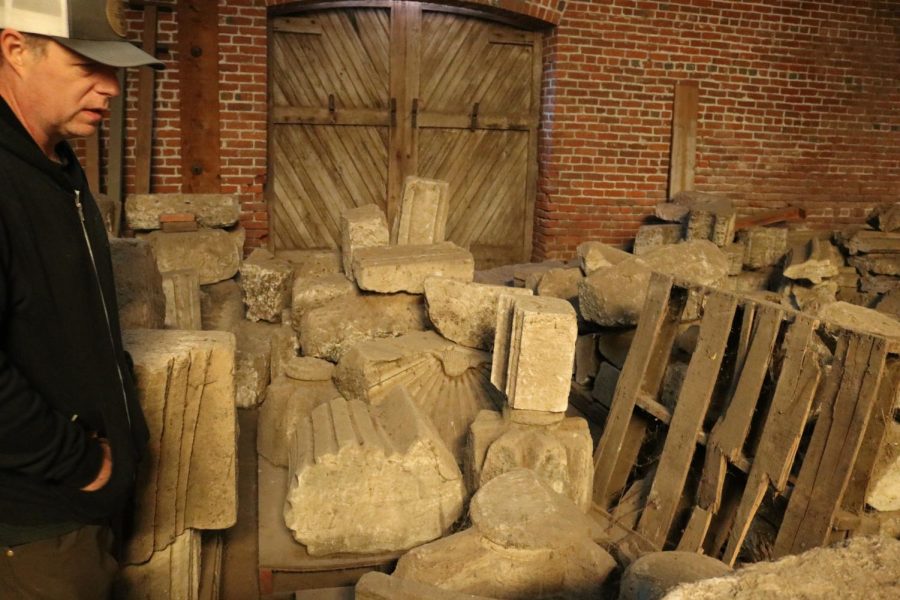
“Everything points back to that car ride through Golden Gate Park.”
-John Adams
Now that they had the stones, the monks of New Clairvaux needed someone to help them construct their Church. But first, the building that housed the monks, known as the Stanford Mansion, had burned down, and they needed a new home as well.
Phil Sunseri, a descendant of the Nichelini family, could’ve been a fourth-generation winemaker. Instead, he went to Chico State and got his degree in construction management. As fate would have it, he ended up hearing about the Trappist-Cistercian monks and their need for a new home. He ended up working with them in the mid 1990s, and because of how much time he was going to spend up there, purchased a cattle ranch in Vina.
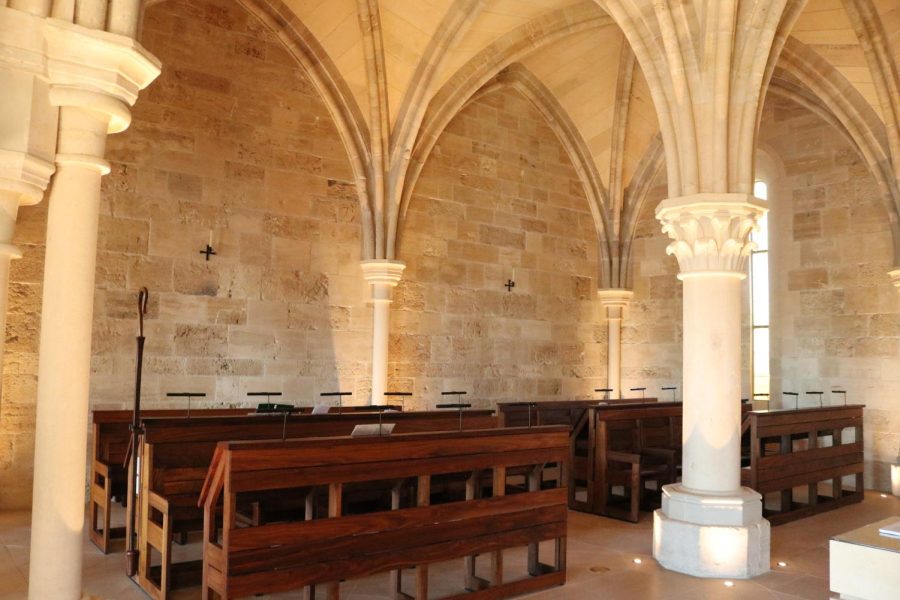
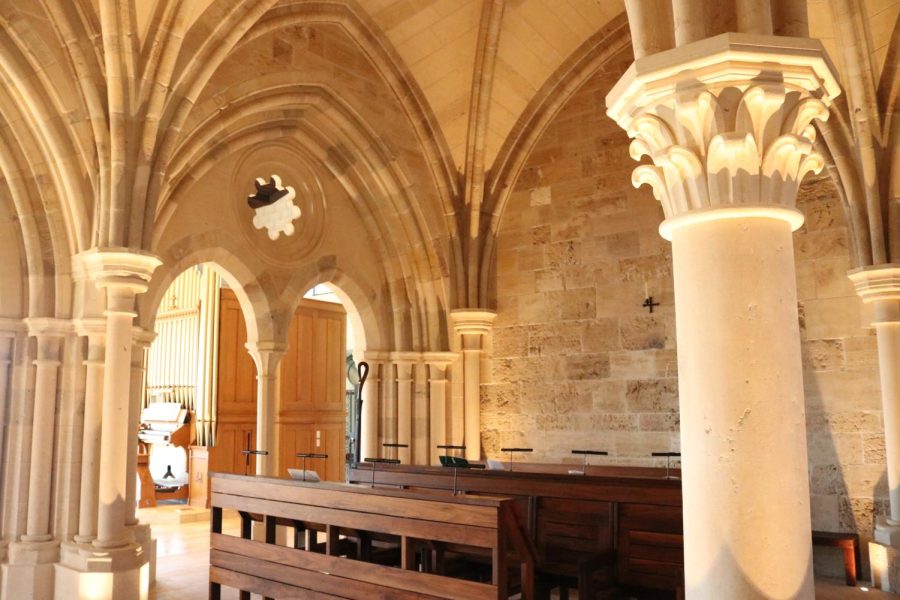
New housing quarters were built for the monks, and as Sunseri’s construction company grew, so did his family’s relationship with the monks. Soon thereafter, the monks approached Sunseri and asked if he could build a 12th-century Gothic building using the stones. Sunseri was up to the challenge, so he and a team of monks, architects, masons and more flew to Europe to study the monasteries and their architecture.
Once they returned, Adams said that the Abbott asked Sunseri what he was going to do with his land. He told the monk that his family had a history of winemaking and that he was going to plant a vineyard. The Monks, who had a rich history of grape growing and winemaking themselves, followed suit and planted a sister vineyard on their property. Today, these lots are known as Poor Souls and St. James.
By 2000, the first grapes had been planted, however tending to acres of vineyard was no easy task, but luckily, the monks weren’t alone.
Phil Sunseri’s children helped on his ranch and in the two vineyards during the summer and winter. This was the deal they had worked out with their father, who was paying for their education. At this time, Phil’s daughter Aimée was pursuing a degree in biopsychology at the University of California, Santa Barbara and was considering med school as her next step. However, when summer rolled around, she found herself in the vineyards almost every day.
“Every waking hour outside of school when I was going to school, was in the vineyard or in the winery or in the tasting room,” Aimee said. “I loved it.”
One day, while working at the St. James block on the monks’ property, Aimée was approached by one of the monks. She began talking about her family and their history of winemaking when the monk posed her a question.
“You know you are the first one to get to work so you can be the first one to drive the tractor, you obviously love this type of work, why aren’t you continuing your family’s legacy?” the monk asked.
That one question would go on to change Aimée’s life.
“It was that simple question, and I had never thought about being a winemaker,” Aimee said. “It was a monk that had to awaken that in me, and I just couldn’t stop thinking about it and by the end of the summer I asked my parents ‘if I could get into Davis, would you guys support me through one more degree?’”
Her parents told her they would pay for one more, but before they did, Aimée needed to finish her degree at UCSB and then get accepted into the University of California, Davis.
The easy part was finishing her degree. UC Davis however, was another story. After graduating from UCSB with a 3.9 GPA, she had to apply three different times before she got into Davis, largely because of how competitive the viticulture and enology program there is.
After getting in, Aimee was constantly working. When she wasn’t in Davis pursuing her education, she was driving back and forth between Vina to assist the monks and her father, and the Nichelini Family Winery where she would learn more about the profession from her relatives.
Sunseri graduated from UC Davis in 2003, just before New Clairvaux’s first wines were released. The monks didn’t have a winemaker, so they took a chance on Aimée and gave her a shot.
The first few years weren’t entirely smooth sailing, as Aimee admitted she had a lot more book knowledge than experience. Regardless, she credited her team and monks for their hard work, and said they started off with solid craftsmanship but lacked adequate tools.
After a few harvests, Aimée and her team “finally got to a point where craftsmanship was really shining through.” Phil Sunseri and the monks decided to pour more capital and resources into the operation, and it has been expanding ever since.

“They knew I was determined, that I was gonna get it right and they very graciously gave me a shot, and again, twenty years later, twenty years after, I think they would definitely say that we have surpassed all of our expectations, so that feels really good,” Sunseri said.
The age of Aimée:
In 2005, New Clairvaux opened their tasting rooms. The two rooms are both located in the gigantic, all-brick winery constructed by Leland Stanford over 130 years ago. The rustic but elegant atmosphere provides a great setting for wine lovers, both novices and experts, to enjoy the literal fruits of New Clairvaux’s labor.
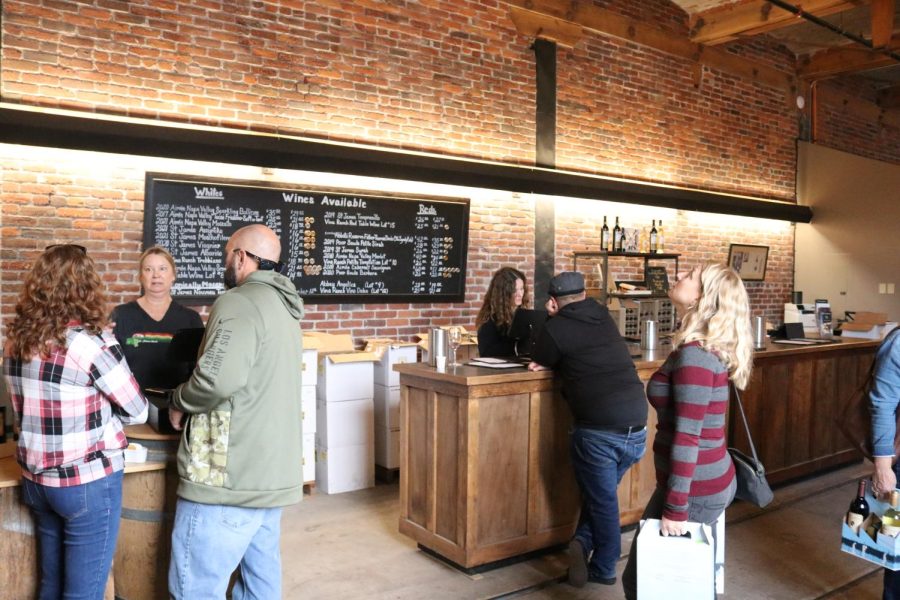

Today, New Clairvaux produces around 13,000 cases of wine a year, made from numerous grape varieties. The grapes are aged in stainless steel tanks, as well as French, American and Hungarian oak barrels.
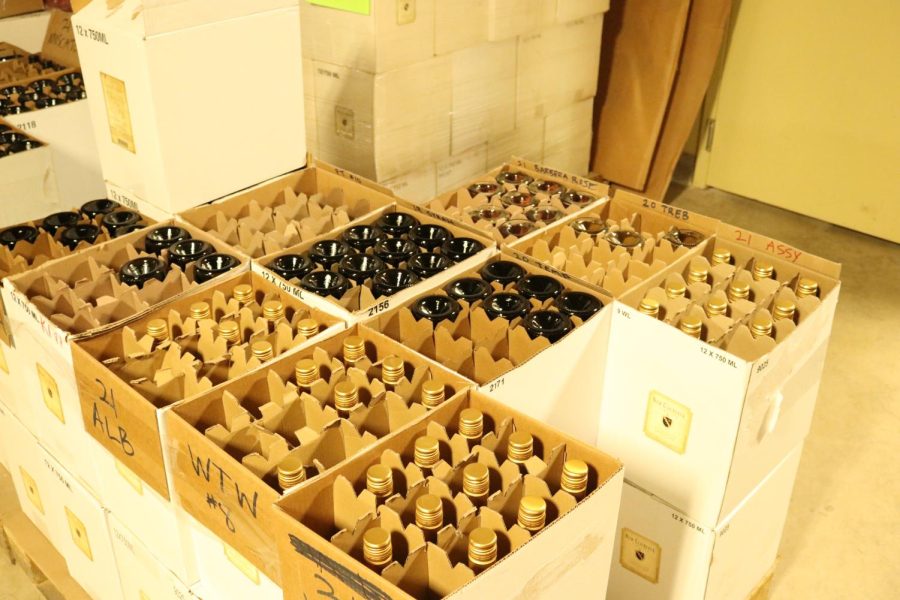
The vineyards grow grapes from all across Europe, from reds like petite Sirah to whites like their award-winning Viognier. In 2011, New Clairvaux made history when it became the first winery in the U.S. to grow the acclaimed Assyrtiko variety, a type of grape from the Greek island of Santorini.
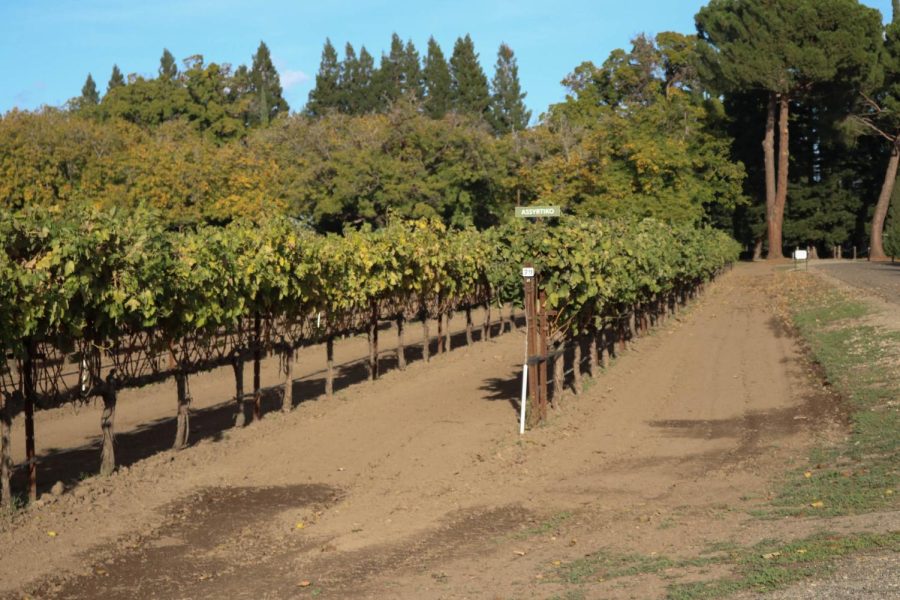
As New Clairvaux’s wine matured and evolved throughout the years, so has the winemaker herself. In 2009, Amiée became the winemaker at the Nichelini Family Winery. The Sunseri’s also have their own land in Napa that is used to grow grapes, however, they didn’t want their Napa wines labeled as a product of New Clairvaux.
“We wanted New Clairvaux to be solely Vina because we are very proud of the Vina fruit,” Aimée said.
In order to keep the two types of wine distinct from each other, Aimée and Phil needed to create a new label. After submitting their idea to the designer, Phil made some last-minute changes and surprised his daughter by naming the new wine after her.
Between working in a profession she loves, carrying on a long-standing family legacy and having a name that literally brings forth the image of renowned wine, what more is there for her to accomplish?
Well, her day-to-day largely depends on what time of the year it is, but there’s always something to be done in Vina or Napa, and a couple days out of the week Aimée is at one of the vineyards by 7 a.m. She said there are lots of moving parts, and despite having an excellent team, machines break down and there are problems that require solutions.
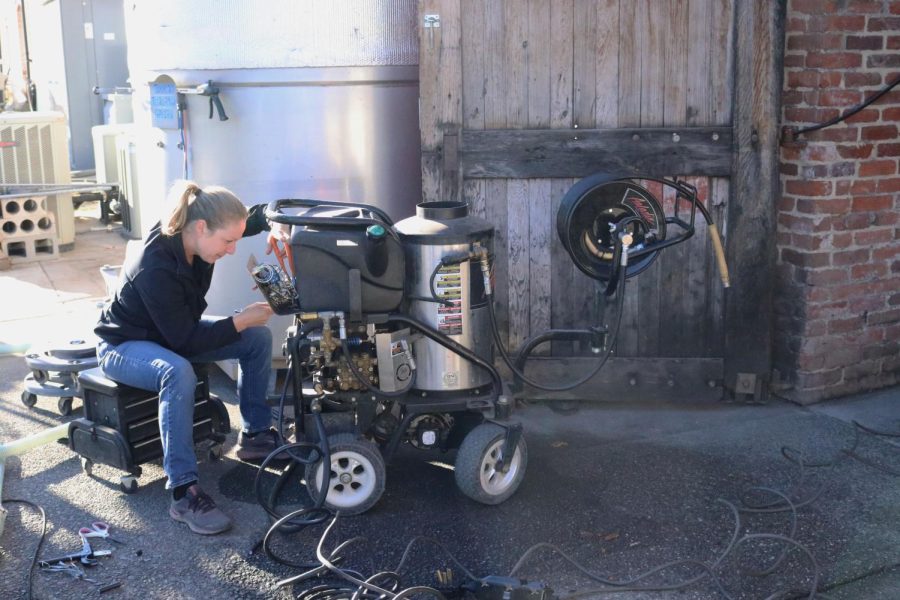
On other days, she doesn’t arrive until later so she can take her kids to school, and emphasizes how important being with her family is. Her worst days are the ones when she gets up at 3 a.m. for business planning.
“That one is painful,” she said with a laugh.
In spite of the traveling back and forth across Northern California and the long days here and there, Aimée seems to enjoy what she does and is proud yet humble about what she has been able to accomplish.
Just take it from her.
“It’s twenty years later and I’m still smiling about it,” Aimée said. “I still love it.”
Noah Herbst can be reached at orionmanagingeditor@gmail.com or @NoahHerbst13 on Twitter. All photos by Noah Herbst.

